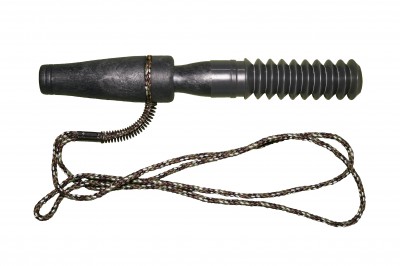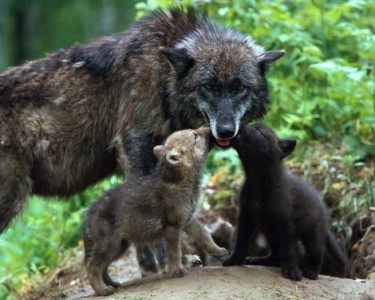Wolves are extremely territorial and they don’t like coyotes. If you have spent all of your hunting day trying to call in wolves, and distress calls don’t seem to be working, you should try using a coyote howler.
The following sounds are sounds you are going to want to be able to make BEFORE you attempt to call in wolves. According to www.huntwolves.com, the following tips on mimicking coyote howls can help you lure them in:
 “Location Howl
“Location Howl
Coyotes begin their howls with what is known as a “Ki-Yi”. Unlike wolves which generally communicate with long howls, coyotes communicate with a series of short yips, barks, and howls. A coyote howl is generally preceded by a few short yips and goes something like: “Yip-Yip-Howl… Yip…yip-yip-Hooooowl.”
Challenge Howl
A second type of call coyotes make is a challenge howl. A challenge howl is a lower pitched howl generally preceded by a bark and is made by male coyotes to challenge intruders in their territory. A challenge howl goes something like “Bark-DEEP SHORT HOWL”.
Distressed Canine
A third type of sound you want to simulate is the sound of a coyote in distress. A distressed coyote call sounds much like the sound your dog would make if hurt or injured; high pitched yips and whines like:“Yip-YIIIP-YIIIP”.
Throwing it all Together
Once you have a good grip on how to make all of these sounds, you will be ready to put together a full calling sequence with a coyote howler. To call wolves in with a coyote howler, a typical calling sequence should go like this:
- Start out with 2 or 3 long location howls, and then wait 3-5 minutes.
- Next, do 3-4 aggressive challenge howls, remembering to throw in a bark or two in between each short deep howl.
- Wait for 4-5 minutes while being extremely cautious of your movements and highly observant.
At this point two things are likely to happen if wolves are in the area:
- They will begin howling back
- They will quickly and silently come running to kill the intruding coyote
If the wolves have responded to your location or challenge howls by howling back, continue to challenge them with more challenge howls and aggressive barks. Each time the wolf or wolves howl, wait 5-10 seconds and respond back. This howling match may be short or it may go on for several minutes. Each time the wolves respond, listen carefully to see if they are getting closer and in what direction they are traveling. If the wolves are getting closer simply continue the cadence of challenge howls and barks until they are within distance and you have a shot.
If the wolves are simply howling back and not coming closer or if they never responded to your original challenge howls and still haven’t showed up, it may be time to change the tempo.
At this point it is recommended to break into a wild sequence of yips, whines, and barks of a distressed canine. Imagine the sound of two dogs fighting or a mother dog correcting her pup. You want to make it sound like a battle is going on. Do this in 20-30 second bursts with a minute or so break in between. If wolves are in the area this should bring the whole pack running.”
Basically, you can try calling wolves in with a coyote howler any time of the year. When it comes to coyotes, wolves typically come in with coyote calls to defend their territory. For that reason, it makes calling them in with a coyote howler during Spring and Summer, when the wolves are protecting their pups, most effective.
There are several other ways a coyote howler can be useful, even if you aren’t calling in wolves. As listed at huntingwolves.com:
 “Great opportunities a coyote howler can be used are:
“Great opportunities a coyote howler can be used are:
- After you have located wolves with a wolf howler.
- If the wolves are just howling back and not moving, jump into a distressed canine sequence to get them moving.
- If wolves are coming in too fast, use a coyote howler to bark or yip. A quick yip will usually stop a wolf in tracks for a few seconds to get a shot off.
If you’ve just shot a wolf and others in its pack are running off, jumping into a distress sequence will usually stop the pack from running off so you can get another shot off. Sometimes it will even bring the whole pack running back in.”
SOURCE: HUNTWOLVES.COM